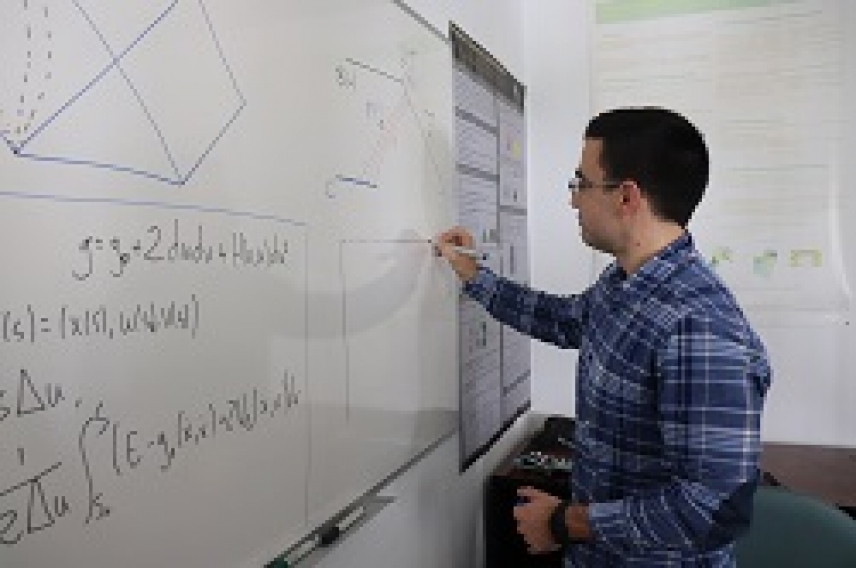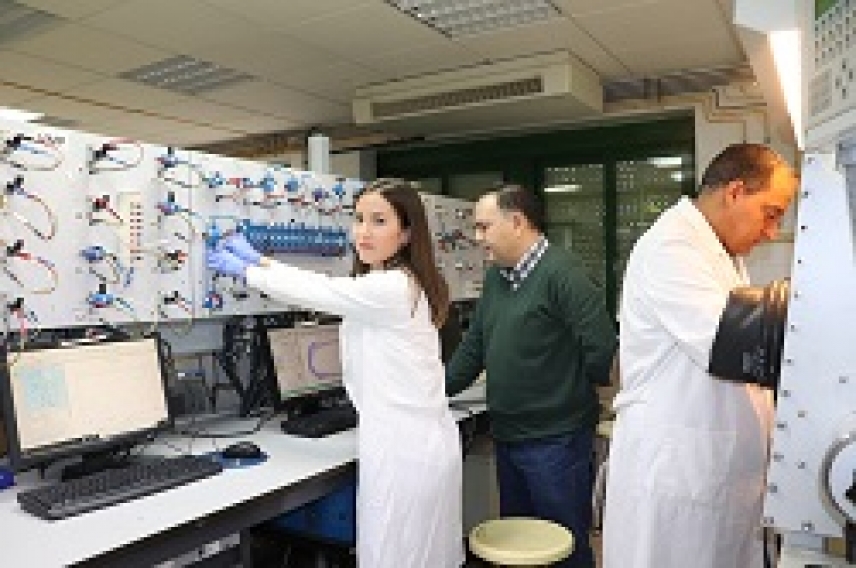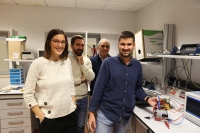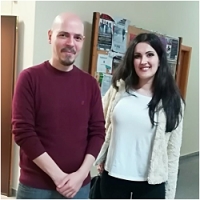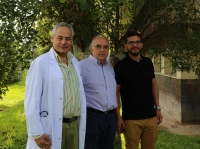A mathematical model allows for finding black holes in regions of space where traditional methods fail to do so
Escrito por UCC+iA collaborative research project with the Universities of Cordoba and Malaga as well as the Federal University of Santa Catarina in Brazil, has developed a new formula capable of broadening the knowledge of these phenomenons
The mathematical explanation of the universe has had theoretical physics on the ropes at times. For instance, four years ago, Professor Laura Mersini-Houghton from the University of North Carolina at Chapel Hill mathematically proved the impossibility of the existence of phenomenons such as black holes. Nevertheless, gravitational waves generated by two black holes merging were detected for the first time recently (the study won the Nobel Prize in Physics in 2017).

Far from abandoning the idea of their existence, the scientific community continues to debate how to mathematically explain these phenomenons. And this search is where we can find the latest contribution realized by a team of mathematicians at the University of Cordoba (Jonatan Herrera), the University of Malaga (José Luis Flores) and the Federal University of Santa Catarina in Brazil (Ivan P. Costa e Silva). Their work was recently published in the Journal of High Energy Physics.
Herrera, Flores and Silva propose a new mathematical model that is broader than the classic approaches commonly used in Theoretical Physics, so there is an increase in the possibilities of characterizing kinds of black holes in different regions. These are analyzed by means of sophisticated mathematical models, which translates into being able to define the wide variety of possible kinds of black holes, which is not an easy task. In the last fifty years since Albert Einstein formulated his first theories on black holes, there have been many ways of translating how to mathematically understand black holes, but the novelty that this research published by these three authors presents lies in the fact that it is a general model, “broader than those in existence up to now, and therefore allows for increasing the study’s scope which lets us examine the presence of black holes in new regions,” explains Professor Herrera.
The published mathematical model, which conjugates different formulas on spacetime, is based on the idea that determining what region a black hole belongs to can be done by determining what regions of space “escape” from said black hole. What Herrera, Flores and Silva have done is define a far-off region of an “infinite light” black hole as Herrera explains, that allows for determining from what regions in space it is possible to move away as much as one wants from the center of a black hole.
Silva, IPCE; Flores, JL; Herrera, J. A novel notion of null infinity for c-boundaries and generalized black holes. JOURNAL OF HIGH ENERGY PHYSICS DOI: 10.1007/JHEP09(2018)123
Calcium passes the test to substitute lithium in rechargeable batteries for electric cars
Escrito por UCC+iResearch at the University of Cordoba shows the potential of calcium to be a component of batteries in the future at an theoretical and experimental level, due to it polluting less and its plentiful supply
One possible solution to pollution in cities from combustion engines is the use of electric vehicles. Currently lithium ion batteries are the most commonly used in electric vehicles. However, they are not free from problems. Foreseeably, lithium resources will be insufficient to cover the battery market in the future. In addition, lithium batteries are not as safe as can be and they contain toxic components that are environmentally damaging.
University of Cordoba researchers are able to improve prediction systems by reducing the quantity of information
Technology is taking giant leaps and bounds, and with it, the information with which society operates daily. Nevertheless, the volume of data needs to be organized, analyzed and crossed to predict certain patterns. This is one of the main functions of what is known as ‘Big Data’, the 21st century crystal ball capable of predicting the response to a specific medical treatment, the workings of a smart building and even the behavior of the Sun based on certain variables.
A University of Cordoba research group has developed a low cost sensor to custom measure the power quality of the structure in each device
More and more facilities are implementing management systems under the industry 4.0 paradigm based on smartness and efficient management. In particular, appliances come with an increasing amount of functions that make household chores easier: refrigerators that regulate their own temperatures or predict which foods need to go on the shopping list. But, what if, in addition to these features, appliances were able to measure the quality of the power they are supplied with? This would allow for self diagnoses, knowledge about what happened in the case of malfunction and the prevention of future malfunctions.
Phobic anxiety is linked to sexuality issues in women who are breast cancer survivors
Escrito por UCC+iA University of Cordoba research project reveals that mental well-being is a determining factor in sexual dysfunction in women affected by this kind of cancer
Psychological variables are determining factors in sexuality development. A study carried out by a research team made up of researchers from the University of Cordoba, the Maimonides Institute of Biomedical Research (in Spanish abbreviated to IMIBIC) and Queen Sofia University Hospital revealed that sexual dysfunction suffered by women who are breast cancer survivors is linked to phobic anxiety, which nevertheless, does not affect sexual function in women with no history of cancer.
Keeping phosphorus under control to improve the quality of life of those who suffer from renal failure
Escrito por UCC+iA University of Cordoba research team, Cordoba’s Maimonides Institute of Biomedical Research and Queen Sofia University Hospital link phosphorus normalization in blood to a decrease in a hormone that damages the heart
The FGF23 (Fibroblast growth factor 23) hormone originates in bone to communicate with the kidney whose duty it is to excrete excess phosphorus that the bone detects. Its main function is bone-kidney communication to eliminate phosphorus, but what happens when the person has renal failure and kidneys that do not work in addition to an impaired excretion ability? What happens is that the failing kidney is unable to abide by FGF23. Nevertheless, the bone keeps producing this hormone because it does not detect that the kidney has stopped working, resulting in a build-up of FGF23 in the blood.


